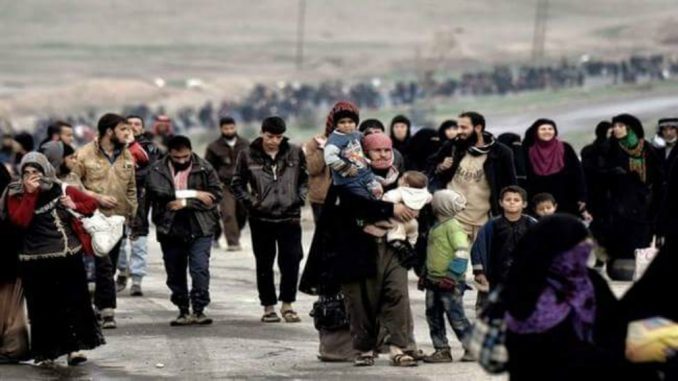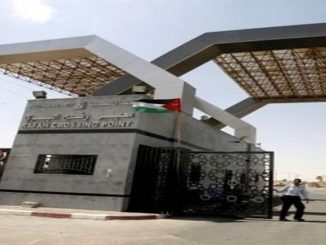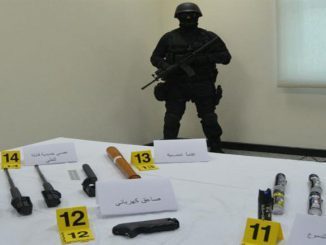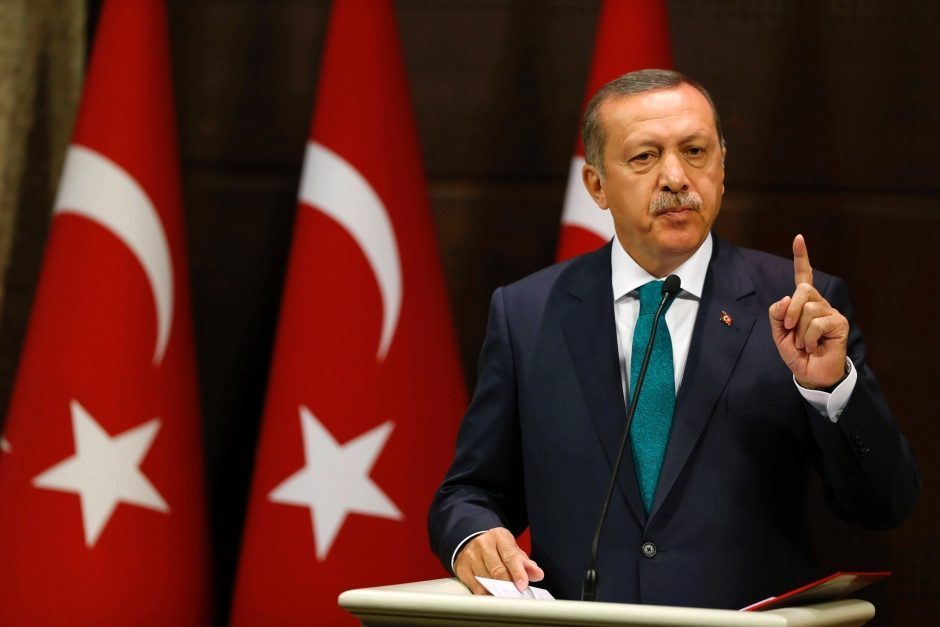
Thousands of Iraqis fled out of western Mosul on Saturday, escaping the heavy fighting in the city, as US-backed Iraqi forces were facing fierce resistance from Islamic State militants in districts around the densely populated Old City.
At the height of its power two years ago, Islamic State ruled over millions of people in territory running from northern Syria through towns and villages along the Tigris and Euphrates river valleys to the outskirts of Baghdad in Iraq.
It was the mosque of Mosul where al-Baghdadi declared his Caliphate and named himself as the ruler of all Muslims from Mosul’s Great Mosque after his forces swept through northern Iraq in 2014.
However, ISIS’s territory is shrinking rapidly since last year as the US-led coalition, the Turkish-backed forces, and the Russian-backed Assad regime forces have fierce fights against its forces in both Syria and Iraq.
The United States is providing air and ground support to Iraqi and Kurdish forces trying to dislodge the hardline group from Mosul.
Iraqi forces captured the eastern side of Mosul in January after 100 days of fighting and launched their attack on the districts that lie west of the Tigris river on Feb. 19.
Islamic State militants who retreated across the Tigris river to western districts also regularly target civilian areas under government control in the east with mortars and grenades dropped from drones.
Several thousand militants, including many who traveled from Western countries to join up, are believed to be in Mosul among a remaining civilian population estimated at the start of the offensive at 750,000.
They are using mortars, sniper fire, booby traps and suicide car bombs to fight the offensive carried out by a 100,000-strong force made up of Iraqi armed forces, regional Kurdish peshmerga fighters and Iranian-trained Shi’ite paramilitary groups.
250.000 civilians were displaced
As fighting intensified, civilians streamed out of western neighbourhoods recaptured by the government,
desperate and hungry and traumatised by living under ISIS’s harsh rule. Some pushed children and sick elderly relatives in handcarts and wheelbarrows.
“We have been trapped for 25 days. No water, no food, everyone will die and they will have to pull us from the rubble,” said one resident of Bab Jdid district, not giving his name because relatives remained inside Mosul.
Families with elderly relatives and children marched through western Mosul’s muddy streets, past buildings pock-marked by bullet and bombs. Some said they had hardly eaten in weeks, scrambling for supplies handed out by a local aid agency.
“It is terrible, Islamic State have destroyed us. There is no food, no bread. There is absolutely nothing,” said another resident.
Soldiers packed them into trucks on the Mosul-Baghdad highway to be taken to processing areas.
As many as 600,000 civilians are caught with the militants inside Mosul, which Iraqi forces have effectively sealed off from the remaining territory that Islamic State controls in Iraq and Syria, while nearly 100,000 Iraqis have fled western Mosul in the past three weeks.
Around 255,000 people have been displaced from Mosul and surrounding areas since October, including more than 100,000 since the latest military campaign in western Mosul began on Feb. 19, according to United Nations figures.
The last week has seen the highest level of displacement yet, with 32,000 displaced between March 12 and 15.
More expected to flee
That number may still rise sharply. The United Nations last month warned that more than 400,00 people, more than half the remaining population in western Mosul, could be displaced. Fears of more chemical attacks are driving some people out.
“up to 450,000 are expected to make their way to the camps,” Lise Grande, humanitarian coordinator for the UN Assistance Mission in Iraq, said.
One civilian said that mortar rounds were falling as they fled. They took advantage of the army retaking their district to get out.
“ISIS wanted us to move to their areas but we escaped when the army arrived,” he said.
Even when they are fleeing, death keeps hunting the Iraqi civilians as there are no safe humanitarian corridors out of the city and ISIS militants were shooting anyone who tries to leave.
“There is no secure humanitarian corridor to get out of the neighbourhoods that have been cleared, but even then there is still crossfire,” she said.
“They [civilians] are having to make their way over barren land … just south-west of Mosul. We have seen people walking across land; people in wheelchairs, women with children exhausted and terrified, also leaving relatives behind because they are not sure if the route is secure.”
The World Health Organization has set up multiple trauma stabilising points (TSP), as close to the frontlines as possible, Grande said. There, wounded civilians are given emergency care before being transporting to the nearest hospital.
“What is striking about this crisis is that half of the casualties are civilians,” said Grande.”TSP areas have had to dramatically expand. We were not expecting this amount of casualties.”
Out of the entire IDP population at the refugee camps, 56 percent are children under 18.
There are about 1,000 unaccompanied children who have been separated from their families while attempting to flee since the offensive on western Mosul began, said Grande. “They [unaccompanied children] are the most vulnerable. They require the most intensive care we provide.”



